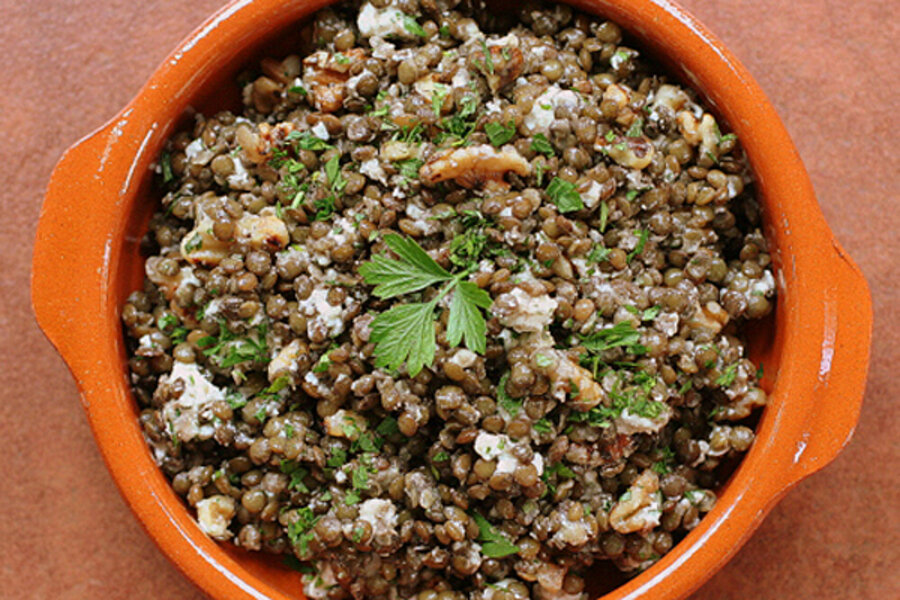French lentil salad with walnuts and goat cheese
When the weather turns chilly, it may seem that the time for cold salads has past. But this lovely, homey lentil salad is perfect for fall. The ingredients for this could not be humbler, but somehow the whole comes off as sophisticated. This is the kind of dish I imagine a French home cook would whip up if you just dropped by unexpectedly.
This salad is great beside a grilled piece of pork or a roasted chicken. It makes a great lunch with a piece of crusty bread, and can easily be packed to take to the office or a picnic. For company, I toss the nuts, herbs and cheese in right before serving, but the leftovers, or a fresh batch just for you, are great sitting in the fridge for a few days as you snack out of the bowl.
Walnut oil can be a bit pricey, but it is a wonderful treat to give salads and dressings a nutty zing. Something about it adds to the French-ness of this salad. You can use olive oil, either as half the oil or all of it. French green lentils, or lentils de puy, are the perfect for salads because they cook up tender but still retain their shape. These lentils used to be only found at gourmet shops or mail-order, but I have finally shared this recipe because I now find them regularly in the organic grains aisle at my large grocery store.
French lentil salad with walnuts and goat cheese
6 cups chicken broth
1 carrot
1 celery stalk
2 cloves garlic
2 bay leaves
2-1/2 cups petite green lentils (such as Bob’s Red Mill)
3 cloves garlic, minced
1/3 cup white wine vinegar
1 tablespoon Dijon mustard
1/2 cup walnut oil
salt and pepper
1 cup chopped walnuts
2 tablespoons chopped flat leaf parsley
4 1/2 ounces goat cheese, crumbled
Pour the chicken broth into a large pot. Cut the celery and carrots into large chunks and add to the broth with the peeled garlic cloves and bay leaves. Bring to a boil and add the lentils, stirring well. Boil the lentils for three minutes, skimming off any green scum that rises. Reduce the heat to medium low and simmer for 25 – 30 minutes until the lentils are tender, but still hold their shape.
While the lentils are cooking, place the garlic, vinegar and mustard in a blender and food processor and blend until smooth. Add a good pinch of salt and generous grinds of black pepper. Drizzle in the oil with the motor running until you have a creamy dressing.
When the lentils are done, drain away any remaining liquid and discard the carrot, celery, garlic and bay leaves (It’s best to do this is in a fine strainer, these lentils are small). Transfer the lentils to a bowl, then pour the dressing over the warm lentils, tossing gently to fully coat. Cool slightly, then cover the bowl and refrigerate the lentils for eight hours or overnight.
When ready to serve, lightly toast the walnuts in a dry skillet until they are just brown and smell toasty. Toss the walnuts, parsley and crumbled goat cheese with the lentils. Taste and season with more salt and pepper as needed.





